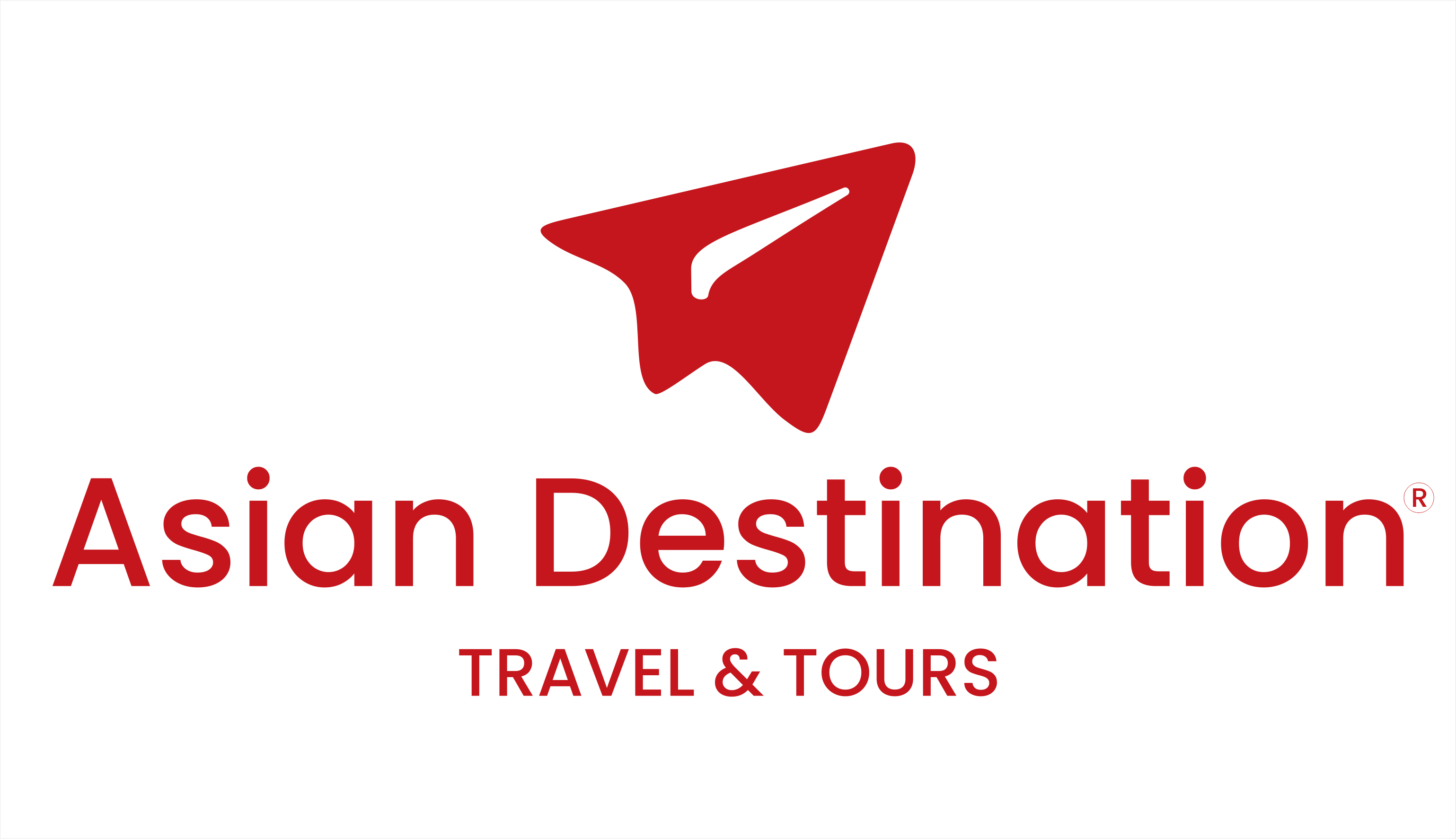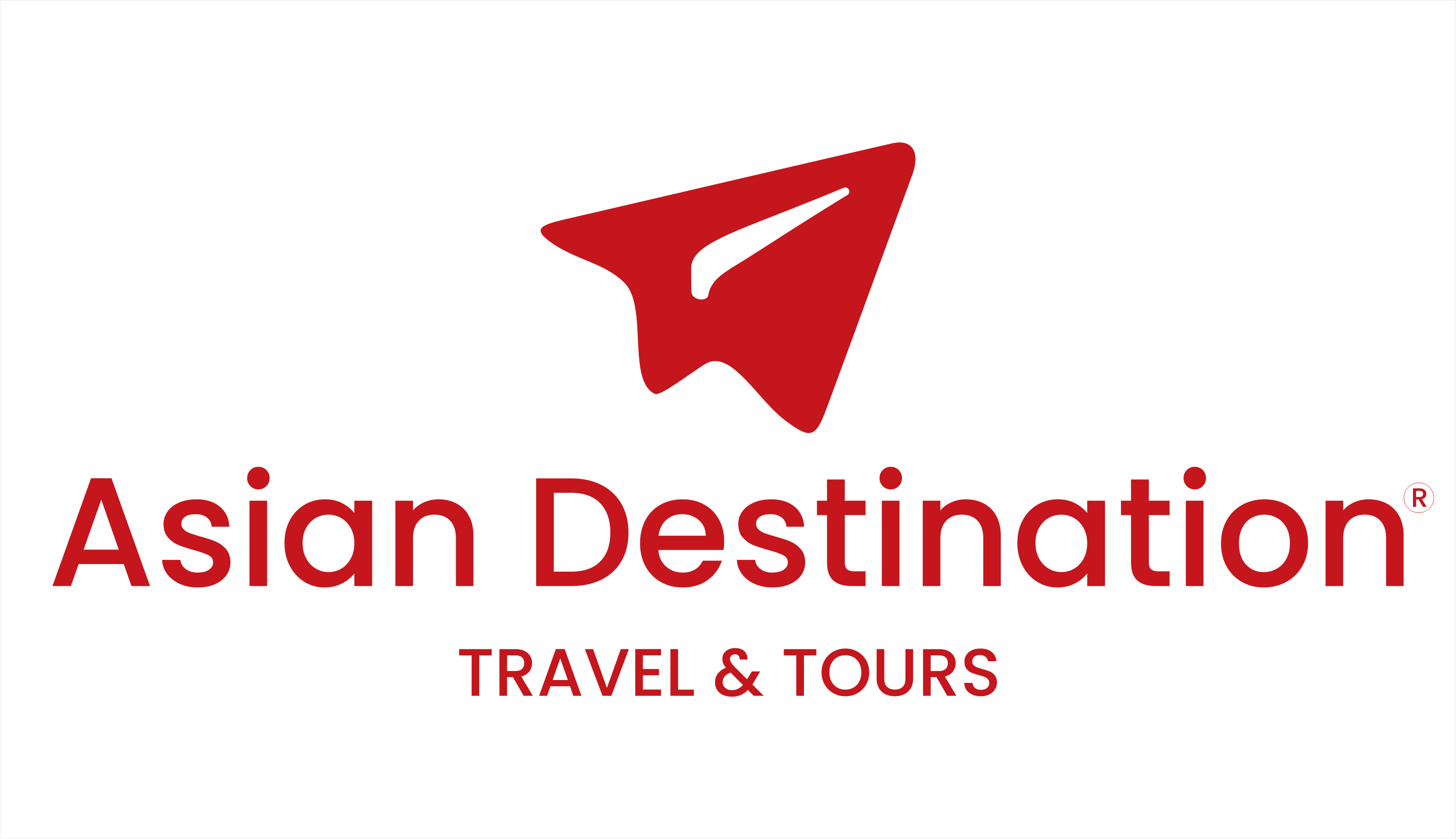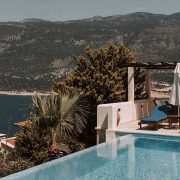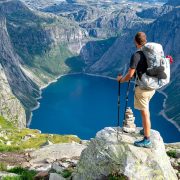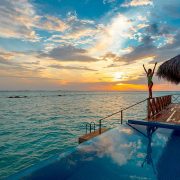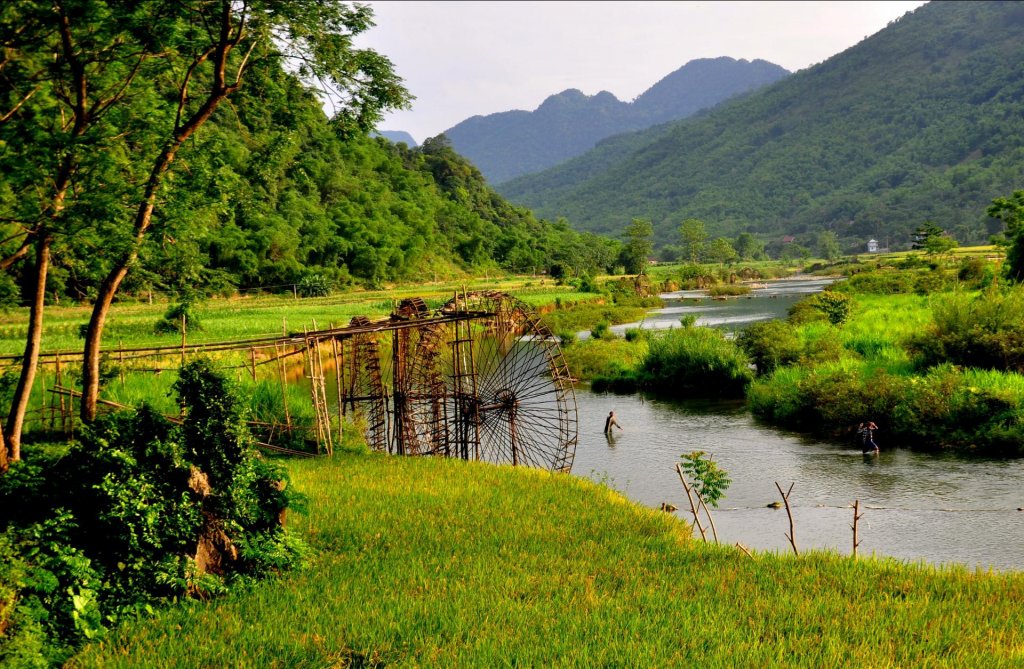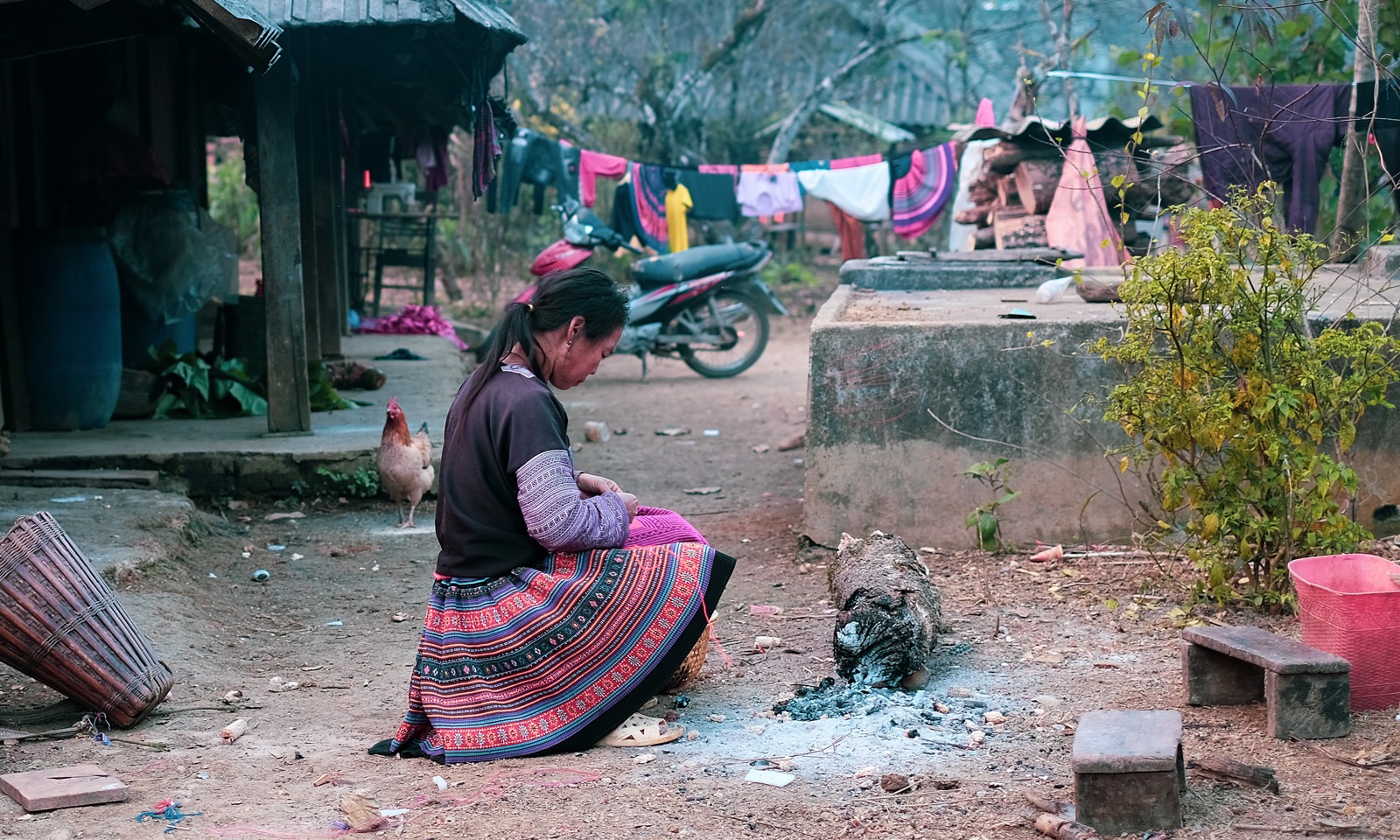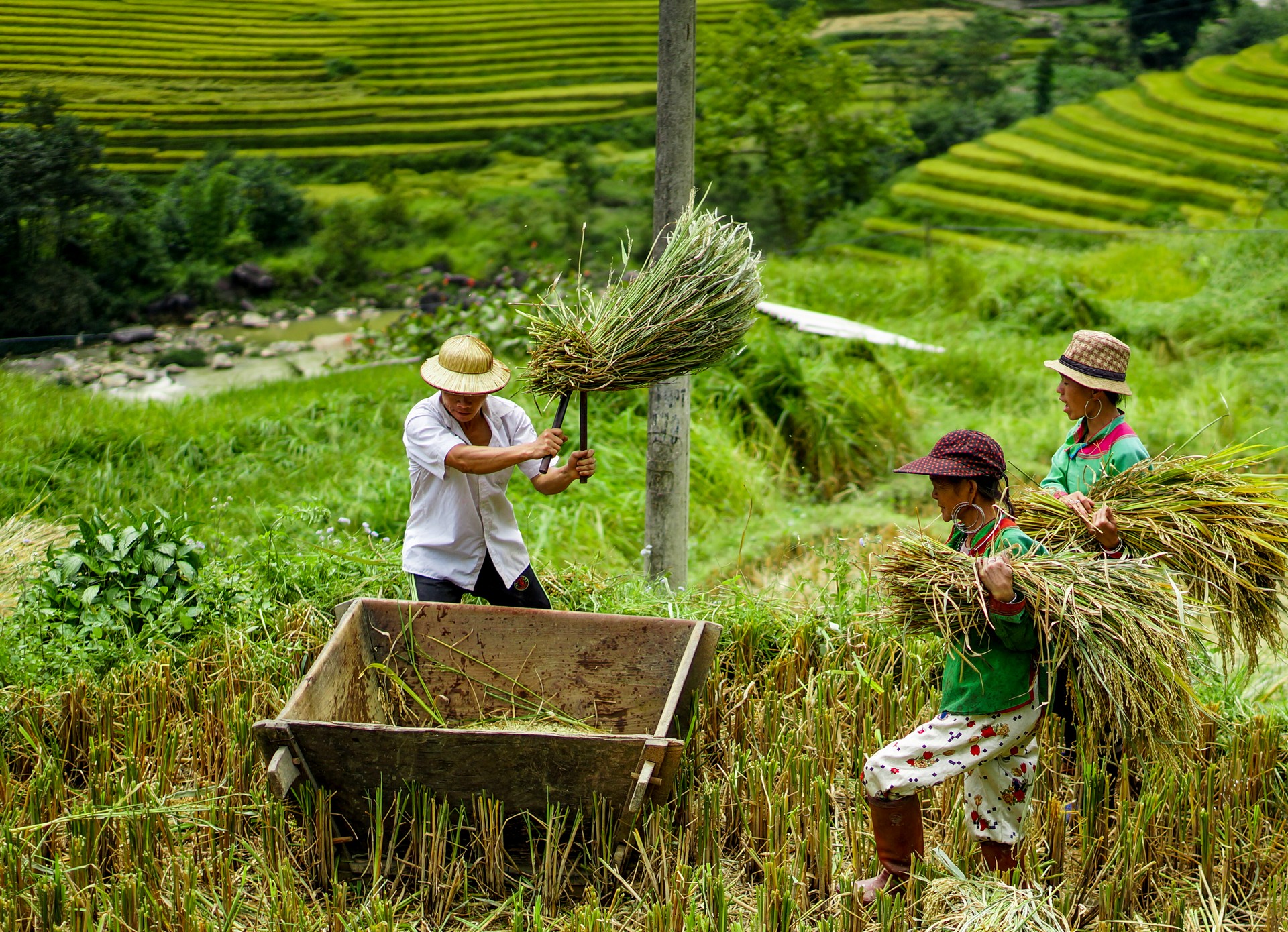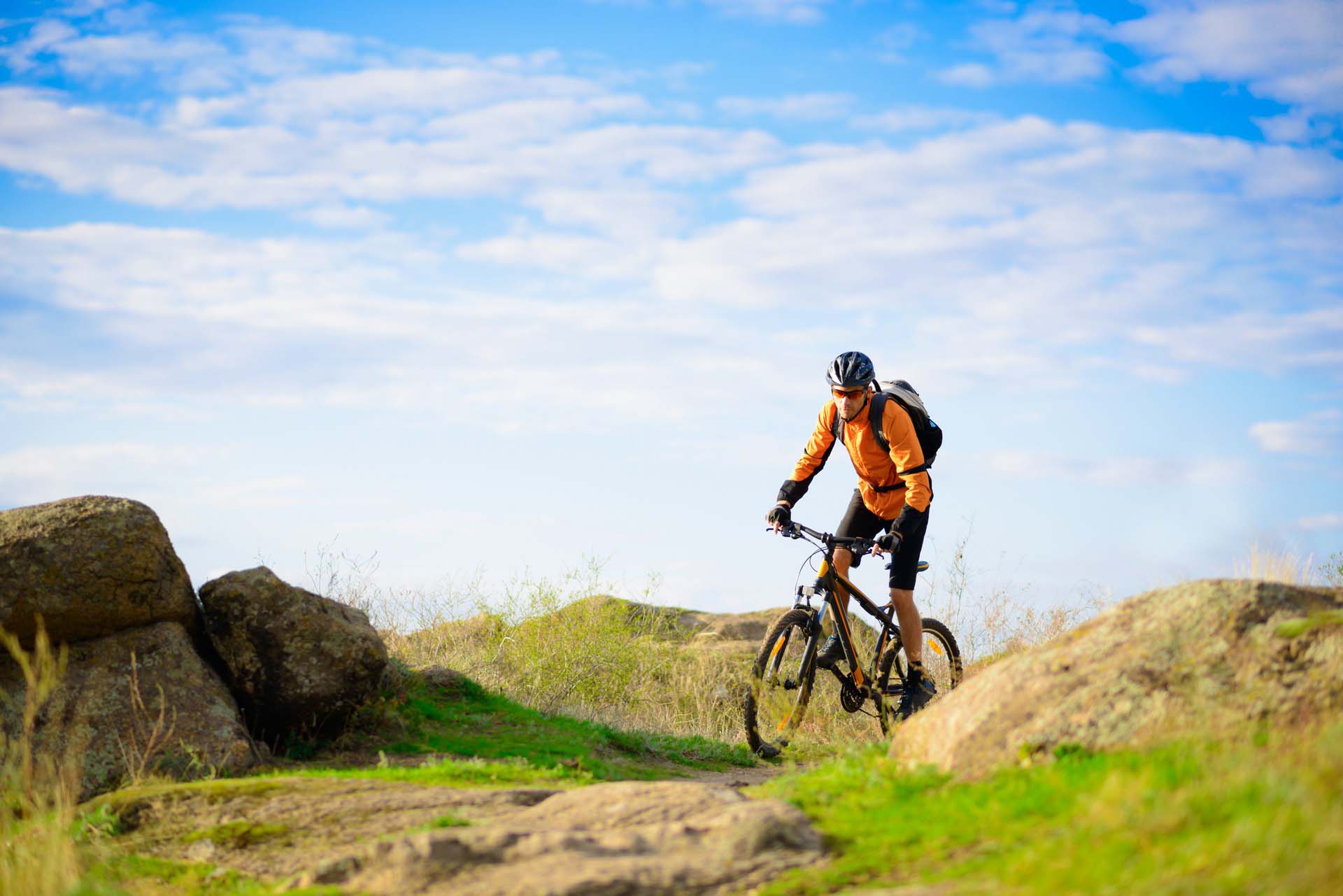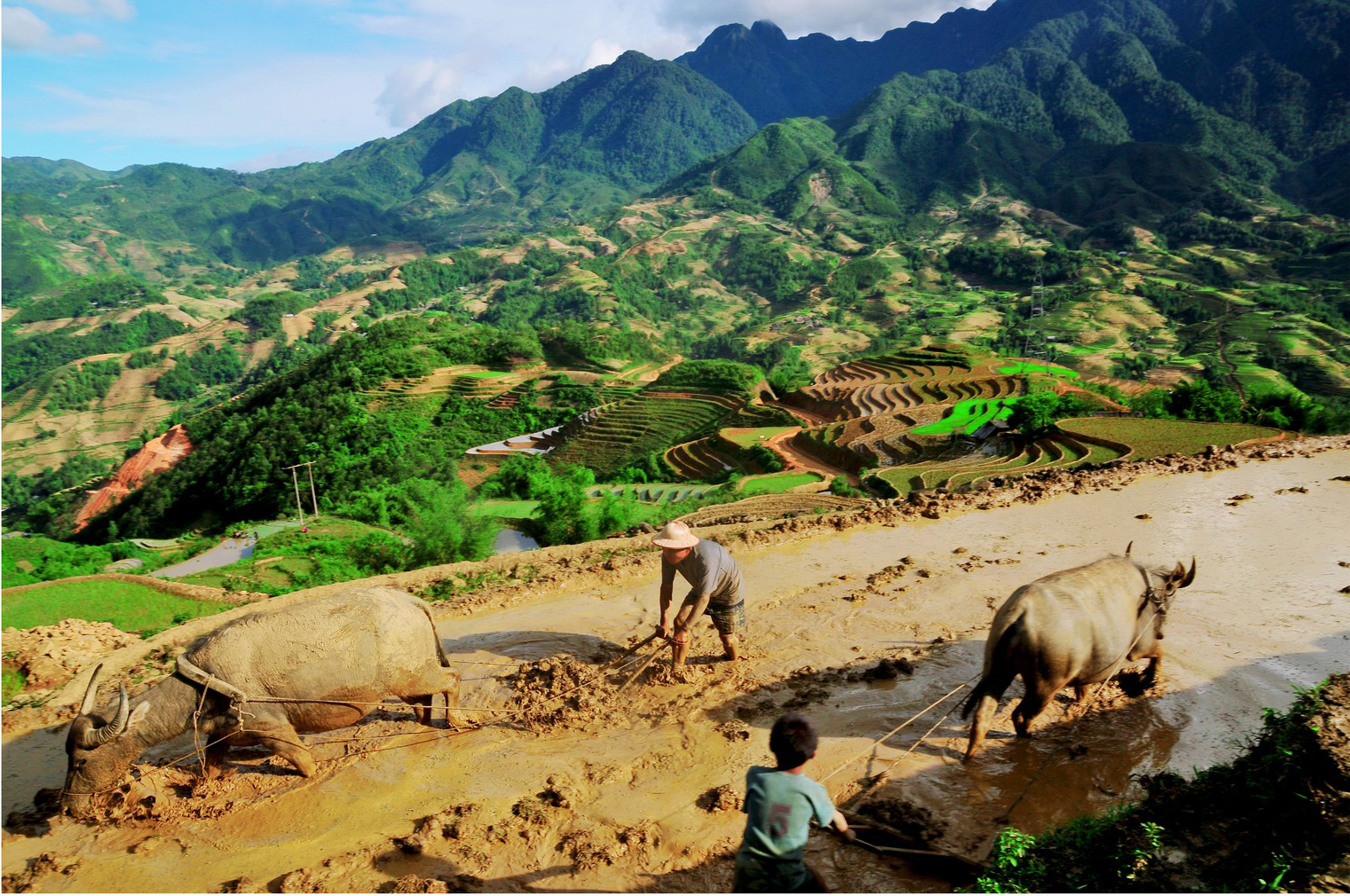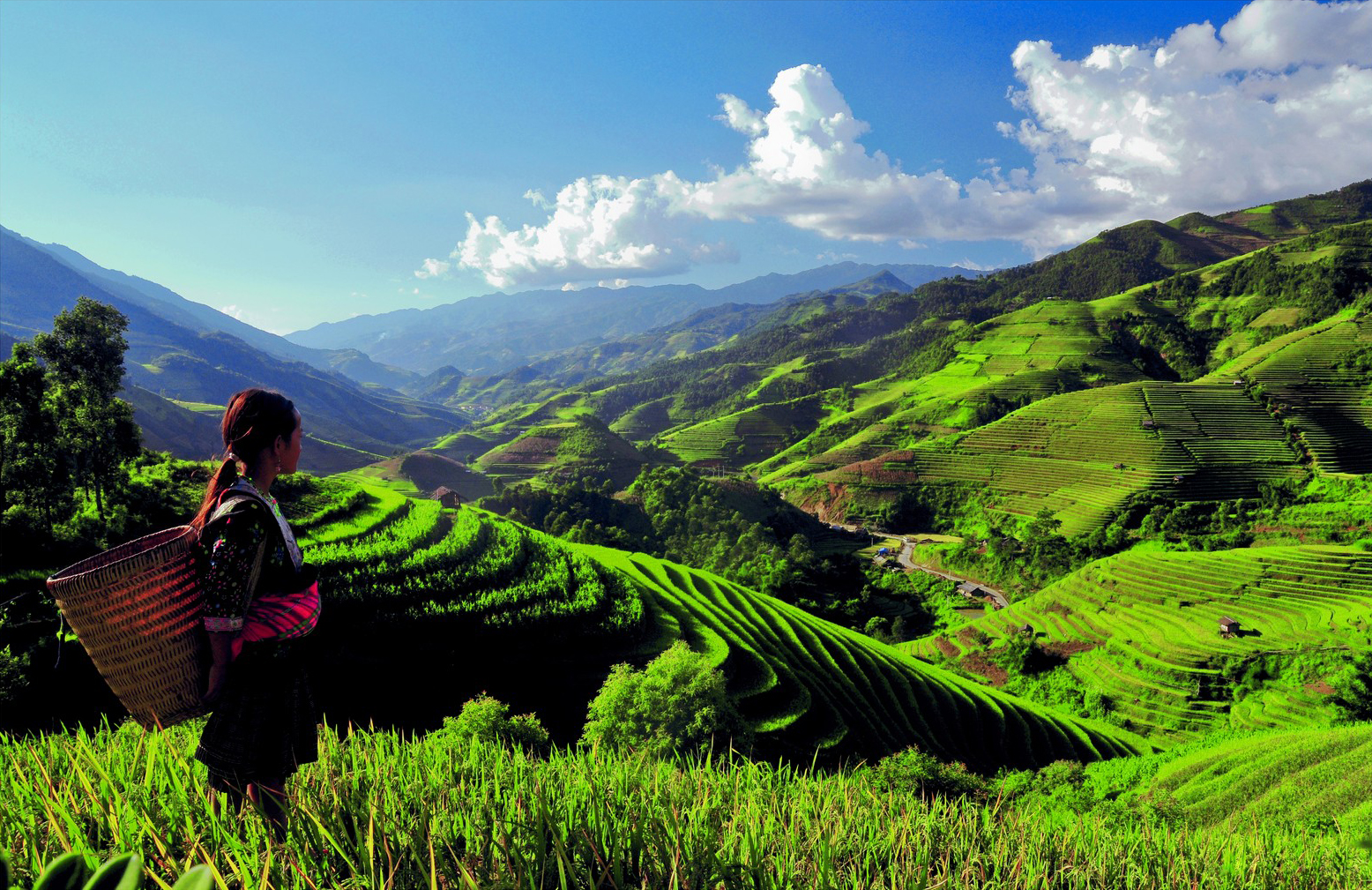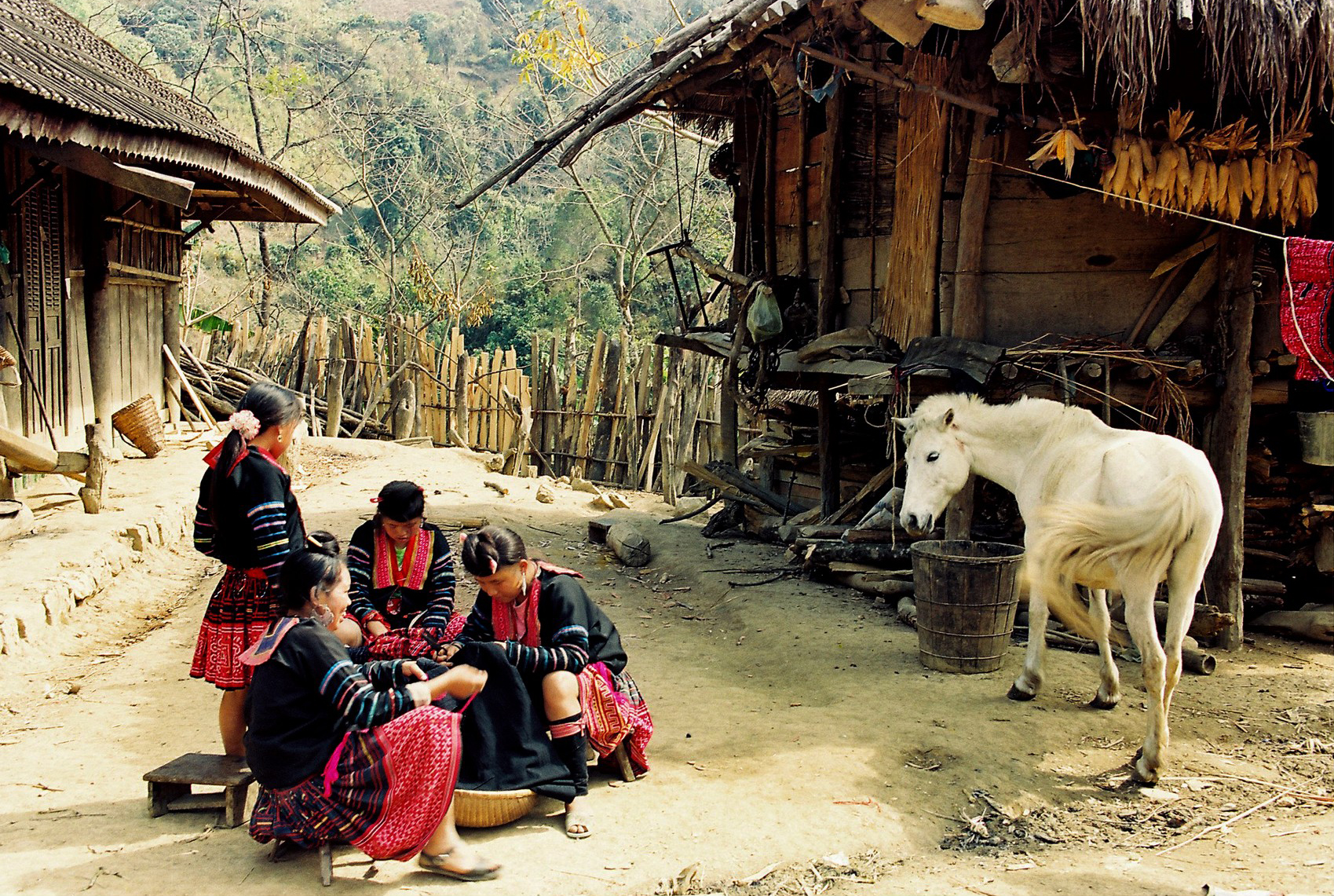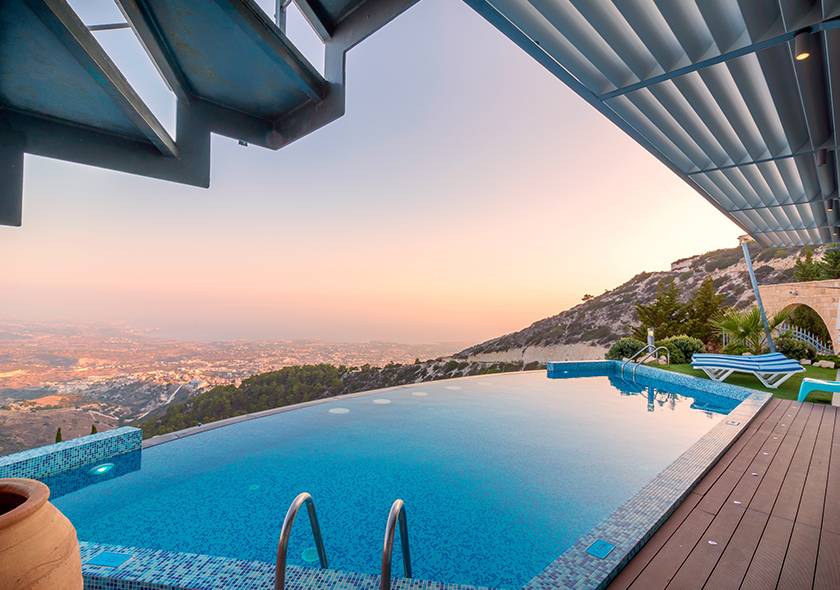Myanmar FAQs
- Home
- Myanmar FAQs
FAQs
Myanmar has a tropical climate, with the southwest monsoon bringing rain from May to October. Roads can become impassable, particularly from July to September. The central plains, however, receive only a fraction of the rain seen on the coast and in the Ayeyarwady delta. From October onwards the rains subside; the best time to visit most of Myanmar is from November to February, when temperatures are relatively manageable. From March to May, the country becomes very hot, particularly the dry zone of the central plains where Bagan and Mandalay often see temperatures in excess of 40°C.
Festivals and Holidays in Myanmar
Most festivals in Myanmar are based on the lunar calendar; check the official Ministry of Hotels & Tourism site for a more extensive list ( myanmartourism.org/festivals.htm).
Shwedagon Festival
Feb/March. The country’s biggest paya pwèh (temple festival) takes place at Shwedagon Paya in Yangon.
Thingyan
April 13–16. The water festival is the most popular in the calendar, marking New Year with a good soaking as temperatures soar. It also has a spiritual side, as it’s when the nat king visits the human world to record good and bad deeds. Hotels and transport are often booked solid.
Fire Balloon Festival
Nov. Daytime parades at this three-day event in Taunggyi, east of Inle Lake, include impressive animal-shaped hot-air balloons. At night, balloons are released with huge gondolas full of fireworks strapped underneath them, sometimes with predictably explosive results.
Shan New Year
Dec. Keep an eye open for the different ethnic groups’ new year celebrations around Dec and Jan. This one rotates between different Shan towns, and includes live bands, traditional dancing and – on Shan New Year’s Eve itself – fireworks and an inclusive party atmosphere.
Ananda Pahto festival
Dec/Jan. The paya pwèh at Ananda Pahto is the biggest in Bagan, running for the fortnight leading up to the full moon of Pyatho. For the last three days, hundreds of monks chant scriptures day and night.
The cheapest way to reach Myanmar from outside the region is usually to fly to a regional hub such as Bangkok or Singapore. Current routes within Asia include flights to Yangon from Phnom Penh, Siem Reap, Kuala Lumpur, Singapore and Bangkok. Connections with Mandalay are limited to Dehong, Kunming and Bangkok.
Overland from Thailand
There are four border crossings with Thailand: Ranong–Kawthaung; Three Pagodas Pass (Sangkhlaburi–Payathonzu); Mae Sot–Myawaddy; and Mae Sai–Tachileik. It is possible to make a day-trip to Myanmar through any of them for a fee of $10 or 500 baht, but if you’re just crossing on a visa run then don’t choose Three Pagodas Pass as you will not get a new Thai visa stamp on re-entry. If you want to take a look around before returning to Thailand then you will need to surrender your passport at the border and return before the crossing closes for the day (usually at 6pm, but do check).
If you hope to spend more than a day in Myanmar then it is theoretically possible when entering through Ranong–Kawthaung and Mae Sai–Tachileik, but not with a standard visa. For the former crossing, you’ll need a special permit, which in practice is impossible to obtain unless you have booked an expensive resort or a live-aboard diving trip. For the latter, you can arrange a fourteen-day permit at the border, but it does not allow travel beyond Kengtung. You are also likely to require a local guide.
Tachileik–Mae Sai is also the only overland crossing where foreigners who entered by air are allowed to exit Myanmar, but it isn’t at all straightforward. Although it’s easy to obtain a free permit to visit the border town of Tachileik (apply at the immigration office in Kengtung), actually crossing into Thailand requires prior arrangement with Myanmar Travels & Tours (the government tourist office) in Yangon. You should not rely on it being possible until you actually have the permit in hand; expect the process to take a couple of weeks and cost at least $50, plus you may be required to take a local guide to the border. If it all works out then you should receive a fifteen-day visa on arrival into Thailand, if you don’t already have one.
Overland from China
There is a border crossing open for foreigners between Ruili (Yunnan province) and Muse. For some years it has only been open to organized tour groups, although there are rumours that it is due to be opened to independent travellers.
Overland from India
The crossing between Moreh in India and Tamu is theoretically open to foreigners, but onerous permit requirements – which take several months to negotiate, if you’re lucky – mean that it is not a feasible route.
Overland from Laos or Bangladesh
It is not currently possible for foreigners to cross from Laos or Bangladesh into Myanmar.
- Most foreign nationals require a visa to enter Myanmar. Visa-free travel (for 14 days, or longer in some cases) is permitted for Thailand, Singapore, Vietnam, Philippines, Indonesia, Brunei, Cambodia and Laos passport holders.
- Citizens from Japan, South Korea, Hong Kong, and Macau are permitted visa-free travel for up to 28 days.
- Chinese and Indian passport holders can a get visa on arrival for USD50 (at international airports only).
- In addition to getting visas at embassies and consulates, Myanmar has an online e-visa system. It is designed to make the process of application simpler for visitors – particularly those from countries that do not have a Myanmar embassy.
- For e-visa applications, go to the official Ministry of Immigration e-visa website. Citizens of 100 countries are eligible for Myanmar e-visas; to see the full list, go here.
- E-visas are currently valid for entry at Myanmar’s three main international airports: Yangon, Mandalay and Nay Pyi Taw and overland travel to Myanmar via the Thai-Myanmar border points of Mae Sai/Tachileik, Mae Sot/Myawaddy and Ranong/Kawthaung as well as India-Myanmar border points of Moreh/Tamu and Zokhawtar/Rikhawdar (e-visa is not valid at Thailand Phunaron/Htee Kee entry point).
- Due to the sensitive political situation in this border region, entry and exit via the Chinese land border of Ruili-Muse is restricted.
- Tourist visas are valid for 28 days, which can be extended by a further 14 days at a cost of US$3 per day (plus a one-off $3 administration fee). It is important to be ready with the correct change at your departure point. Bear in mind that if you overstay, you might encounter some difficulties booking travel and/or hotels in your overstay period, as not all service staff are aware of the overstay allowance.
- Do not apply for your visa too early: the period for visa validity (i.e. your Myanmar entry date) may range from one to three months.
- Do not apply for your visa too late: if you are applying for a paper visa, embassies and consulates can take anything from one day to more than two weeks to process your application. If you are from a country that does not have a Myanmar embassy or consulate and you are unable to apply for e-visa, it will take longer still.
- You must have a passport that is valid for at least six months after your departure from Myanmar.
- A single entry tourist visa will typically cost around US$50. Depending on which country you are applying from, the application procedures may vary, but it is usually a simple process.
Although there are now affordable flights from Bangkok to Mandalay, most people still start their visit in Yangon (Rangoon). This former capital makes a great introduction to the country, with evocative colonial-era buildings, some of the country’s best restaurants and the unmissable Shwedagon Paya – the holiest Buddhist site in the country. Relatively few tourists head southeast from Yangon, other than to the precariously balanced Golden Rock at Kyaiktiyo, but Mawlamyine and Hpa-an are great places to hang out, whether you’re exploring caves full of Buddhist art, sleeping at a mountain-top monastery or visiting home-based workshops.
West of Yangon are a handful of beaches, with Ngapali the most highly regarded, but Chaung Tha and Ngwe Saung much more affordable. Most travellers instead hasten north to Mandalay, the hub for ‘Upper Burma’ and the base for visiting the remains of several former capital cities, or to Bagan further west for its stunning temple-strewn plains. East of Mandalay is Kalaw, the starting point for some great walks. A trek from Kalaw is one way to reach the magnificent Inle Lake, with its stilt villages and famous leg-rowing fishermen. If time allows, a trip on the Ayeyarwady (Irrawaddy) River around Katha and Bhamo offers a great chance to meet locals, as do the hiking routes around Hsipaw in Shan State, which pass through ethnic minority villages.
The question of whether to visit Myanmar – and if so, how to minimize any negative impact of that decision – has long been a complicated one. For many years, the official position of the National League for Democracy (NLD), the opposition political party of which Aung San Suu Kyi is the Chairperson and General Secretary, was to urge foreigners not to visit the country as it put money directly into the pockets of the regime. Still, some tourists did visit each year, arguing that the majority of their money was actually going to individuals and private businesses. Similarly, many people within Myanmar felt it was important that foreigners visited to see the truth of what was happening. In 2010, the NLD softened its stance, saying that it only opposed package and cruise tourism. Then, in May 2012, in the wake of the UN Secretary General Ban Ki-moon urging an easing of international sanctions against Myanmar, the NLD dropped the boycott entirely.
Nevertheless, it would be a mistake to think that the ethical dilemma has completely gone away. Although the new government is nominally civilian, in reality the same military figures are still largely in charge. In addition the prominent business leaders commonly described as cronies – who became rich through dealing with the regime, and in some cases allegedly through trading in arms or drugs – still own many of the country’s largest businesses, including hotel groups, banks and airlines. And although the government is praised internationally for reforms such as the release of some (but not all) political prisoners and a reduction in censorship (so that NLD posters are now a common sight), some people within the country see these as surface changes intended to please foreigners – particularly the US, which hopes to lure Myanmar away from its main trading partner, China – rather than anything more fundamental.
Furthermore, it should be remembered that the suppression of dissent and suspension of the democratic process were not the military junta’s only crimes. It was also fighting what has been described as the world’s longest-running civil war, with policies that amounted to ethnic cleansing and – in the eyes of some observers – attempted genocide. Although ceasefires have been signed with some of the ethnic militias, vast swathes of the country – particularly in northern Kachin State – remain off-limits to tourists while the new government continues to fight with rebel armies (some of which, it must be admitted, are motivated as much by profit from the drug trade as they are by a thirst for democracy). If free and fair elections are held in 2015 then the NLD is expected to win a landslide victory, but it remains to be seen how they propose to keep the peace with ethnic minority groups who consider the NLD to represent only the Bamar majority – particularly if the military’s stranglehold is weakened as democracy takes root. Already the NLD has been accused of becoming too close to the generals and their cronies as it seeks their political support and funding for social projects. Some compromise is inevitable, not least because the military can veto a proposed change to the constitution to allow Aung San Suu Kyi (as someone who married a foreign national) to run for President.
Bearing all this in mind, travellers should consider limiting the amount of their money that makes it to the government and its associates. Some expenses are unavoidable, including visa fees, while others are hard to avoid if you want to see some of the main tourist attractions, such as the $10 multi-site fee in Mandalay. It can also be difficult to know exactly which businesses in Myanmar are affiliated with the government or its cronies. On the other hand, by staying in budget accommodation your money is already more likely to be going to ordinary individuals or small family businesses than to companies with strong government links (and in this guide we have tried to avoid recommending such places). The same goes for services such as vehicle hire or trekking guides – there are plenty of opportunities to use small companies and freelancers, which often leads to a better experience anyway. Some visitors also consider avoiding planes and even trains (which are operated by the government).
As in other Southeast Asian countries, clothing in Myanmar is usually modest. In some ethnic minority villages it’s still the norm to wear traditional dress, and even in cities many men and women wear a traditional skirt-like garment called a longyi. These days, though, it is also common for locals to wear Western-style clothes and you’ll very occasionally see men in shorts. People will be too polite to say anything, but they may be offended by the sight of tourists wearing revealing clothes. This would include shorts cut above the knee, and – particularly for women – tops that are tight or show the shoulders. It’s especially important to dress conservatively when visiting temples, and some travellers carry a longyi for such situations.
Most women and girls, as well as some men and boys, use thănăk’à (a paste made from ground bark) on their faces; traditionally thought to improve the skin and act as a sunblock, it is often applied as a circle or stripe on each cheek.
Avoid touching another person’s head, as it is considered the most sacred part of the body; feet are unclean and so when sitting don’t point your feet at anyone or towards images of the Buddha. Remove your shoes before entering a Buddhist site or a home. Always use your right hand when shaking hands or passing something to someone, as the left hand is traditionally used for toilet ablutions; however, locals do use their left hand to “support” their right arm when shaking hands.
Most people in the country are Buddhist although there are significant Muslim and Christian minorities. Men are expected to experience life in a monastery twice in their lives, once when a child and once as an adult, although this is only for a short time unless they become a novice. Most Buddhists also believe in nats, spirits rooted in older animist traditions, which are now considered to be the Buddha’s disciples. These supernatural beings take an interest in the actions of humans, and may need to be propitiated.
Considering the social conservatism of Myanmar’s society it is interesting to note that while in the past most nat kădaws (spirit mediums) were women, today most are gay men and many are either transgendered or transvestites. A nat-pwèh (spirit festival) held, for example, at the start of a new business enterprise is an occasion on which people have license to sing, cheer and show emotions which would otherwise be repressed in public. Homosexuality is, however, technically illegal in Myanmar – for tourists as well as locals – and punishable by fines or imprisonment, but this is rarely enforced in practice. There is a discreet gay scene in Yangon, but little elsewhere.
Many parts of Myanmar, particularly border areas and regions where the government is in conflict with ethnic minority groups – such as large swathes of Shan and Kachin states – are completely closed to foreign visitors or require permits that may take several weeks to obtain. What’s more, these closures and requirements can change without warning. Parts of Rakhine state, for example, closed and reopened more than once in late 2012.
Planes
In addition to Myanma Airways, the state-owned national flag-carrier, an array of private airlines – among them Air KBZ, Air Mandalay, Air Bagan, Asian Wings, Yangon Airways and Golden Myanmar Airlines – run services on domestic routes and have offices in major towns and cities. Given the long journey times overland, and the relatively low prices of flight tickets, travelling by plane can be an attractive choice. In a few cases, such as visiting Kengtung, it is the only option as overland routes are closed to foreigners. Many services fly on circular routes, stopping at several airports on the way. At each stop, some passengers will get off, some will get on, and some will stay on board and wait for a later stop. One quirk of this is that it may be easier to make a journey one way (for example, Nyaung U to Thandwe) than the other way (Thandwe to Nyaung U).
There are a number of downsides to domestic air travel. For one thing, it may not save you much time as schedules are subject to change at short notice and delays are not uncommon. It also isn’t possible to buy tickets online, although some airlines – such as Air Mandalay – allow online reservations and you then pay once you’re in the country. This is likely to change following the easing of sanctions, but in any case it’s generally a bit cheaper to buy tickets through local travel agents. In addition, travellers should avoid flying if they are trying to limit the amount of their money that ends up with the government or its cronies (see The Ethics of visiting Myanmar).
Buses
Buses are usually faster and cheaper than trains, and are generally the best way to get around on a budget. There are many different bus companies and most are privately owned. Taking buses can be quite tiring, however, since most long-distance services run through the night, stop regularly for toilet breaks and arrive before dawn. Travelling at night also means that you miss the scenery, but locals prefer it since it means that they can travel without taking a day off work.
Most long-distance buses are reasonably comfortable, but make sure you bring warm clothes as they tend to crank up the air-conditioning. On major routes, such as Yangon to Mandalay, it’s possible to take a more modern bus for a small additional fee. There are also local buses running segments of longer routes, such as Taungoo to Mandalay (rather than the full Yangon-to-Mandalay trip); these are usually in worse condition but are cheaper for shorter trips, as on long-distance buses you pay the fare for the full journey even if you get on or off partway through. You’ll also find smaller, 32-seat local buses that should be avoided if possible, as they tend to be jam-packed with luggage.
It’s a good idea to book a day or two ahead for busy routes (eg Bagan–Nyaungshwe), ones where only a few buses run (eg Ngwe Saung–Yangon) or where you’re joining a bus partway through its route (eg in Kalaw).
Guesthouses can often help book tickets for a small fee, or you can buy them either from bus stations (which in some cases are outside of town) or from in-town bus company offices.
Trains
The railway system in Myanmar is antiquated, slow and generally uncomfortable. On most routes a bus is faster and more reliable – it is not uncommon for express trains to be delayed by several hours, and local trains are even worse. Trains are also more expensive than buses, and since they are state-run, the money goes to the government. All that said, there are reasons why you might want to take a train at least once during your trip. One is that on a few routes, such as from Mandalay up to Naba and Katha, road transport is closed to foreigners. Another is for the experience itself: many routes run through areas of great beauty (the Goteik viaduct between Pyin Oo Lwin and Hsipaw is a good example), plus there is the chance to interact with local people.
All express trains have upper- and ordinary-class carriages. The former have reservable reclining seats, while the latter have hard seats and no reservations. Some trains also have first-class carriages, which fall somewhere between upper and ordinary in price and comfort. Sleeper carriages, when available, accommodate four passengers and come with blankets and linen.
Long-distance trains often have restaurant cars, and food vendors either come on board or carry out transactions through the windows whenever the train stops. The bathrooms onboard are basic and often unclean.
Fares are payable in US dollars and vary according to class, although you may find station staff are reluctant to sell ordinary-class tickets to foreigners. Try to reserve a day or so in advance, or more for sleepers.
Shared taxis and vans
Although not as common as in some Southeast Asian countries, shared taxis and shared vans (the latter also known as minibuses) are available on some routes. Shared vehicles charge separately for each seat and leave once full, making them cheaper than taking a whole taxi. They typically cost around fifty percent more than a seat on an air-conditioned bus, but will drop you wherever you like, which saves on transfer costs in towns where the bus station is inconveniently located. Vehicles can sometimes be arranged through accommodation, and there are sometimes shared-taxi stands in town centres.
In addition to these services between towns, which are primarily used by locals, there are a handful of services aimed specifically at foreigners. These are typically round trips, such as to Mount Popa from Bagan.
Car, bike and motorcycle rental
Hiring a car is not a realistic option in Myanmar as there is too much red tape involved, but it’s easy to arrange a car and driver (from around $40/day) through your accommodation or travel agencies.
Bicycles are available in many places for around K2000 per day. In some parts of the country, for example Mawlamyine and Hpa-an, it is also possible to hire a motorcycle, typically for K8000–10,000 a day plus fuel.
There are numerous hazards for motorcyclists: traffic can be very heavy in the cities, while in rural areas the roads are often in poor condition. Adding to these dangers is the fact that most cars are right-hand drive even though people drive on the right, meaning that cars have large blind spots. Overtaking is, as a result, a pretty risky manoeuvre. Before hiring a motorbike, check that your travel insurance covers you for riding one.
Local transport
Local transport in Myanmar is usually some mix of public buses, taxis, pick-ups (adapted pick-up trucks with seating in the covered back portion), motorcycle taxis (where the passenger rides pillion) and cycle rickshaws. Public buses run only in the largest cities, including Yangon and Mandalay, and are very cheap. It can be very hard to work out the routes but if you aren’t in a rush, then riding on the buses is certainly an experience. The same can be said of pick-ups, which cover set routes and pick up and drop people off on the way; they usually depart regularly throughout the day and can get so full that passengers ride on the roof. If you want the most comfortable seats, in the cabin, then you can pay a little extra.
Taxis are available in large towns and cities, and range from 1970s Toyotas to occasional new left-hand-drive Chinese imports. There are no meters but drivers tend not to overcharge as outrageously as in many other Southeast Asian countries. On the other hand, and particularly in Yangon, they don’t seem to be so keen on bargaining once they’ve offered a price. Expect to pay around K1000–1500 for a decent trip across town, such as from a bus station on the edge of town to a hotel. Tricycles are still in use in many towns, although they are being edged out by motorcycle taxis, which are much faster and normally around the same price (around K500–1000 for a short ride).
Most of these forms of transport can also be hired for a day including a driver, which can be arranged direct, through accommodation or via travel agents; you’ll need to bargain to get a good price. Motorcycle taxis are popular in this regard, particularly for solo travellers, and may not work out much more expensive than hiring a self-drive motorcycle. Groups can often get a good deal on a pick-up for the day, for example in one of the “blue taxis” of Mandalay.
In small towns, horse carts are used as a key form of transportation, and are used to ferry tourists around in a number of places, notably Bagan, Inwa and Pyin Oo Lwin. The horses are not always well looked after, however.
While people in Myanmar take great pride in their cuisine, if you ask someone for a restaurant recommendation then there’s a good chance that they will suggest a place serving Chinese food. This is partly because they worry that foreign stomachs can’t cope with Burmese food, but also because most people rarely eat at restaurants so when they do they eat Chinese as a treat. Most towns will have at least a couple of Chinese restaurants, typically with large menus covering unadventurous basics such as sweet and sour chicken. Dishes start at around K1000 (vegetables) or K1500 (meat). Indian restaurants are also popular, particularly in Yangon which had a very large Indian population during the British colonial era. In tourist hotspots you’ll also find restaurants serving Thai and Western (usually Italian) dishes.
One local tradition that has become an essential tourist experience is a visit to a teahouse. These are hugely popular places to meet friends, family or business associates over tea and affordable snacks, which, depending on the owners, might be Burmese noodles, Muslim samosas or Chinese steamed buns. Teahouses have long had a reputation for being places where politics can be openly discussed, although there have always been rumours of government spies observing. Some teahouses open early for breakfast, while others stay open late into the night.
Burmese food
As in other Southeast Asian countries, in Burmese food it’s considered important to balance sour, spicy, bitter and salty flavours; this is generally done across a series of dishes rather than within a single dish. A mild curry, for example, might be accompanied by bitter leaves, dried chilli and a salty condiment such as fish paste.
The typical local breakfast is noodle soup, such as the national dish mohingar (catfish soup with rice vermicelli, onions, lemongrass, garlic, chilli and lime, with some cooks adding things like boiled egg, courgette fritters and fried bean crackers). Alternatives include oùn-nó k’auq-s’wèh (coconut chicken soup with noodles, raw onions, coriander and chilli) and pèh byouq (fried, boiled beans) served with sticky rice or naan bread. All of these dishes are served in teahouses or available to take away from markets.
Noodles also feature strongly at lunchtime: many locals will have a small bowl at a street café, teahouse or food court. Various Shan noodle dishes are popular, including mì-she (rice noodles in a meat sauce accompanied by pickle). Other common dishes include various ăthouq, which translates to “salad” but rarely includes vegetables; they are cold dishes, usually with noodles, raw onions, gram flour, chilli and coriander, served with a watery vegetable or bone soup. One variety worth trying is nàn-gyì thouq, made with thick rice noodles that look like spaghetti.
Lunchtime is also when you should try Burmese curries if you’re worried about hygiene, since they are usually cooked in the morning then left in pots all day. Local people, however, would typically have curry in the evening at home. A meat, fish or prawn curry will be accompanied by rice (t’ămìn), a watery soup and fried vegetables. A great deal of oil is added to Burmese curries, supposedly to keep bacteria out, but like locals you can skim the oil off. At the best restaurants, the meal will also include a selection of up to a dozen small side-dishes, plus fresh vegetables and herbs with a dip (such as ngăpí-ye, a watery fish sauce). Green tea will usually be thrown in, as will a dessert, traditionally lăp’eq (or lahpet) (fermented tea leaves with fried garlic, peanuts, toasted sesame and dried shrimp), which is much tastier than it sounds. You may also get t’ănyeq (jaggery, unrefined cane sugar).
There are plenty of regional variations to discover as you travel: the food of Rakhine State, for example, is influenced by its proximity to Bangladesh, so curries are spicier and many dishes include beans or pulses.
Vegetarians should find it reasonably easy to find suitable food throughout the country, particularly since some Buddhists are restrained in their consumption of meat.
Drinks
Tap water isn’t safe to drink in Myanmar; bottled water is available throughout the country for around K300. In many restaurants, free green tea (ye-nwè-gyàn) is left in jugs on tables and is safe to drink. In teahouses, black tea is usually drunk with plenty of milk and sugar, while coffee is almost always instant, other than in Western-style cafés.
Although there are few places resembling Western bars or pubs outside of Yangon and Mandalay, most towns will have a couple of beer stations which look like simple restaurants but with beer adverts on display and a predominantly male clientele. These places usually serve draught beer (around K700 for a glass) as well as bottles (from K1700 for 640ml), with the former usually restricted to the most popular brew, Myanmar Beer (produced by a government joint venture) and sometimes its rival Dagon. Both beers are also available in bottles, as are Mandalay Beer and several Thai and Singaporean beers, including Tiger, Singha and ABC Stout.
Mid-range and upmarket restaurants will often have a list of imported wines. There are a couple of vineyards making wine in Shan State, and it’s better than you might expect: look out for Red Mountain and Aythaya. Fruit wines are produced around Pyin Oo Lwin, while local spirits include t’àn-ye (toddy or palm wine).
Outdoor pursuits and adventure sports are not yet well developed in Myanmar, although with tourist numbers soaring this can be expected to change. For now, with the notable exception of trekking, any activities tend to be arranged through travel agents and prohibitively expensive.
Trekking
Opportunities for treks are limited by two main factors. One is that many of the most appealing areas are in the mountainous border regions, which tend to be closed to tourists. The other is that foreigners are generally expected to stay in licensed accommodation for every night of their visit. Camping is illegal as, in most parts of the country, is staying in local homes.
As a result, day-hikes are the limit in many places. In Kengtung, for example, there are some excellent walks to ethnic minority villages but you cannot stay in any of them overnight. There are exceptions, however, with the most notable being around Kalaw, Inle Lake, Pindaya and Hsipaw. In these areas it’s possible to stay in either homes or monasteries, by prior arrangement through a tour agency, and therefore do multi-day treks. It’s still unusual for people to trek for more than three days. A guide is strongly recommended for most hiking, although the trails around Hsipaw are often undertaken without one. In some places, such as Kengtung, a guide is obligatory.
Biking and motorbiking
Both mountain biking and motorbiking tours are available in Myanmar, through specialist agencies. There are many advantages to getting around in this way, not least the chance to interact with people in villages and rural areas; disadvantages include having to put up with the poor state of many roads, plus the requirement to sleep in licensed accommodation which means that you cannot be as flexible or spontaneous as you might like. Some cyclists have used camping as a back-up, but it is, strictly speaking, illegal and should not be relied upon.
Diving and watersports
For a country with such a long coastline, there are very few water-based activities in Myanmar. Scuba diving is offered at Ngapali beach and the Myeik (Mergui) archipelago, neither of which are budget destinations.
Meditation
With a strong and long-held Buddhist tradition, Myanmar is a good place to learn to meditate. Some centres will only take foreigners who commit to staying for several weeks, but one shorter option is a ten-day course in Vipassana meditation
Very few foreign tourists are victims of crime in Myanmar, possibly because the penalties for stealing from tourists are severe. There are, however, occasional reports of opportunistic theft such as of cameras left charging on ferries while the owners wander the decks.
Although the government is engaged in conflict with ethnic resistance groups in several parts of the country, if there’s any danger in an area then it will be closed to foreigners both for their protection and to keep the violence hidden away from international attention. No resistance groups have been known to target tourists.
Although the quasi-civilian government inaugurated in 2011 has taken steps to reduce censorship and released some political prisoners, Myanmar is still far from being a place where freedom of speech can be taken for granted and violence is still regularly used against dissenters and protesters. It is still therefore wise to avoid raising political topics in conversation, as local people can be nervous about finding themselves in trouble; let them take the lead, and be discreet. Also think twice before taking photographs of bridges, police stations and anywhere else where doing so might be considered a security risk.
The quality of health care in Myanmar is generally poor. Routine advice and treatment are available in Yangon and Mandalay but elsewhere the hospitals often lack basic supplies, and some suffer under corrupt administrations. Avoid surgery and dental work, as hygiene standards cannot be relied upon; if you are seriously ill then contact your embassy for advice, and expect international-quality care to be expensive (and possibly to require payment up front). As always, it is important to travel with insurance covering medical care, including emergency evacuation.
Minor injuries and ailments can be dealt with by pharmacists, particularly in major tourist areas where they are more likely to speak English. Pharmacists offer many things over the counter without prescription, although there are serious issues with fake and out-of-date medication.
Police t 199
Ambulance t 192
Fire t191
There are now internet cafés in most towns and cities, almost all with printers and some offering services such as Skype; in addition, some hotels and guesthouses have wi-fi access. Connections are unreliable and can be frustratingly slow; unsurprisingly, high-end hotels tend to be the best bet and it’s normally possible to use the wi-fi if you buy something in their café. Since 2010, censorship of the web has been much less severe and most popular web-based mail can be accessed. Avoid accessing a PayPal account from Myanmar, as it may be blocked.
The best sources of information, besides other travellers and some online resources, are generally the staff at guesthouses. Some of the best of these places are well used to meeting the needs of visitors, providing maps and advice on how to explore the area. The state tourist offices, operated by Myanmar Travels & Tours (MTT), are generally not especially helpful, although you will need to visit one if you want to apply for a permit to travel to a restricted area. They also give out free copies of maps published by Design Printing Services (dpsmap.com), including a detailed one of Bagan and one covering several major cities. Outside of Myanmar, you can buy a number of maps of the country, including the Reise Know How 1:1,500,000 and Globetrotter 1:1,700,000 (the latter also includes some city maps).
The postal service in Myanmar is not known for its efficiency; sending postcards is cheap but they often do not reach their destinations. Post offices are typically open Monday to Friday 9.30am to 4.30pm and sometimes on Saturday mornings, and many have an EMS (Express Mail Service) counter offering faster and more reliable international delivery.
Myanmar’s currency is the kyat (pronounced “chat”), usually abbreviated as K, Ks or MMK. Notes are available in denominations of K1, K5, K10, K20, K50, K100, K200, K500, K1000, K5000 and K10,000, although the lowest value you are likely to encounter is the K50 note. At the time of writing the exchange rate was K860 to $1, K1300 to £1, and K1120 to €1; high-value notes (particularly $100 bills) attract the best exchange rates, so bring those to change. Although at one time the official rate was artificially low and most people changed money on the black market, today banks offer a realistic rate and it is not worth using the black market. It is never a good idea to change money in the street, even if the rate sounds good, as scams are common. Note also that kyat cannot be bought or sold overseas, so you should change any leftover currency before leaving the country.
Kyat are used to pay for food, bus tickets, taxi journeys and items in ordinary shops or markets, but US dollars (and possibly euros, although don’t rely on it) must be used for government services including train tickets and entry fees for major tourist attractions. There are also some circumstances in which US dollars are preferred but not required, notably at hotels and guesthouses but also in some tourist-oriented shops. In these cases, prices are quoted in dollars and if payment is made in kyat then it is usually at a poorer rate than you’d get in a bank. It’s a good idea to bring plenty of low-denomination dollar notes for these situations. Note that it is essential that any currency which you intend to change within Myanmar is pristine, and that US dollars were issued in 2006 or later. Notes that are creased, torn or marked in any way – however minor – may not be accepted by banks, hotels or any other outlets; if they do take them then it is likely to be at a reduced rate. Reject US dollar change unless it is in perfect condition.
For many years, up until late 2012, Myanmar had a cash-only economy as far as tourists were concerned: it was impossible to withdraw money from ATMs within the country, travellers’ cheques were not accepted, money transfer services such as Western Union were unavailable, and only a handful of top-end hotels accepted credit cards. The only option therefore was to bring a stack of cash and exchange it for kyat as necessary. With a relaxing of international sanctions, however, at the end of 2012 some ATMs (mostly in Yangon and Mandalay) started to accept overseas debit and credit cards. It looks like this trend will continue and other changes may be on the way, but you should check on the current situation before travelling. At the time of writing it was still impossible to recommend arriving in Myanmar without enough cash – in euros, Singapore dollars or (preferably) US dollars – to cover your entire trip. The availability of money via ATM was simply too unreliable, particularly outside of the major cities. In addition, at the time of writing, only kyat were available from ATMs.
Standard business hours are Monday to Friday 9am to 5pm, with shops staying open a little later (and normally opening on Saturdays). Post office opening times vary but are generally Monday to Friday 9.30am to 4.30pm, with some opening on Saturday mornings. Banks typically open Monday to Friday 9am to 3pm, although some close earlier. Museums operated by the government are open from Wednesday to Sunday 10am to 4pm. Some major pagodas are open 24 hours a day, while others tend to open from early morning until late in the evening. Restaurants are typically open daily from around 9am to 9pm, while many teahouses open much earlier for breakfast, and places aimed at tourists might stay open until 10pm.
Several holidays are based upon the lunar calendar and therefore change date each year.
January 4 Independence Day
February 12 Union Day
March 2 Peasants’ Day
March/April Tabaung full moon
March 27 Armed Forces Day
April 13–16 Thingyan (water festival)
April 17 New Year
May 1 Labour Day
July 19 Martyrs’ Day
July Waso full moon (beginning of Buddhist ‘Lent’)
October Thadingyut full moon (end of Buddhist ‘Lent’)
November Tazaungmone full moon
December 8 National Day
December 25 Christmas
Many guesthouses will let you make local calls from reception (check the price first), or may make the call for you if you’re trying to book accommodation for later in your trip. There are also local call stands – often just a table with a telephone – in the streets and in some shops. The cheapest and easiest way to call internationally is through a VOIP (Voice Over Internet Protocol) service such as Skype. Otherwise you might need to use public call centres (try asking at the post office), although they are very expensive.
Mobile phone numbers start with 09. International roaming is in its infancy in Myanmar and not widely available, but foreigners can buy a SIM card from mobile phone shops and supermarkets, which lasts 28 days and is issued by the government body MPT (Myanmar Post and Telecommunication). The card costs around K20,000 (it varies from shop to shop) and includes $20 credit. It cannot be topped up; once you run out of credit the only option is to buy a new card, with a new phone number.
Our list of best things to drink in Vietnam includes ice coffee, fruit smoothies, fresh coconut juice straight from a freshly cracked green coconut, sugar cane juice, local beers and artisan rice wine.
Vietnam is not the easiest of places for travelers with disabilities, despite the fact that many locals are disabled as a result of war injuries. Tactical problems include the chaotic traffic and pavements that are routinely blocked by parked motorbikes and food stalls.
That said, with some careful planning it is possible to have an accessible trip to Vietnam. Find a reliable company to make the travel arrangements and don’t be afraid to double-check things with hotels and restaurants yourself.
Some budget and many mid-range and top-end hotels have lifts. Note that bathroom doorways can be very narrow; if the width of your wheelchair is more than 60cm you may struggle to get inside.
Trains are not really geared for travelers with wheelchairs, but open tour buses are doable. If you can afford to rent a private vehicle with a driver, almost anywhere becomes instantly accessible. As long as you are open to how you get in and out of a boat or up some stairs, anything is possible, as the Vietnamese are always willing to help.
The hazards for blind travelers in Vietnam are acute, with traffic coming at you from all directions. Just getting across the road in cities such as Hanoi and HCMC is tough for everyone, so you’ll definitely need a sighted companion!
The LGBQTI community is gradually gaining recognition in Vietnam, with gay pride parades becoming a regular occurrence and a lift on same-sex marriage bans in 2015. With that said, Vietnam is stil a conservative culture and many still hide their sexuality from their families. Ho CHi Minh City and Hanoi have some gay-friendly bars and events. It is generally recommended that both gay and straight couples resist showing public displays of affection.
Information Links
Lastest News
Things to See and Do When Visiting Japan
A Place where Start New Life with Peace
Journeys are Best Measured with Friends

Cities

Cities

